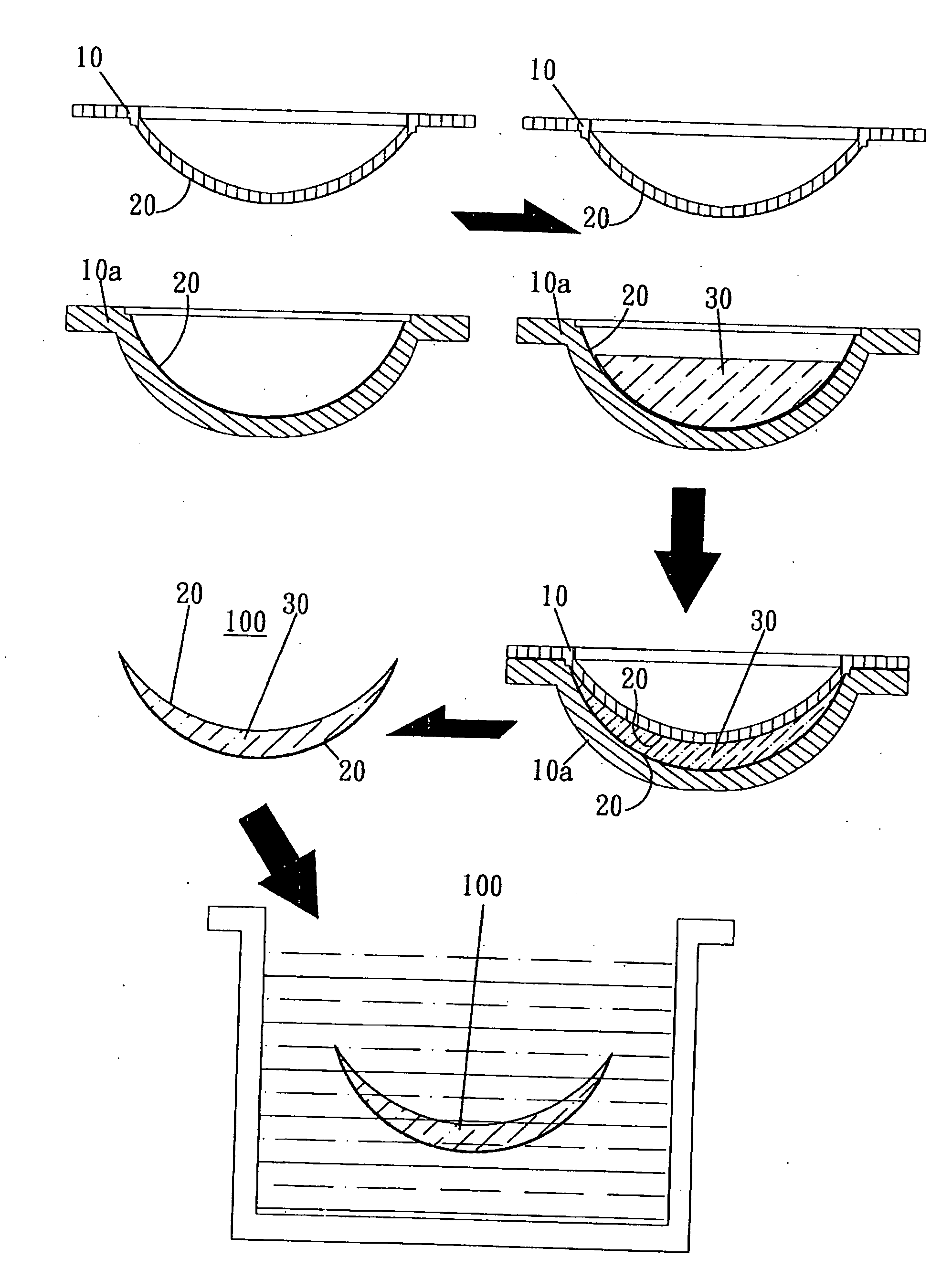Method for manufacturing a silicone contact lens having a hydrophilic surface
a silicone contact lens and hydrophilic surface technology, applied in the field of silicone contact lens manufacturing with sandwich structure, can solve the problems of low oxygen-permeability of soft contact lens, only being worn, and uncomfortable sensation, and achieve the effect of high oxygen-permeability and comfortable wear for a longer tim
- Summary
- Abstract
- Description
- Claims
- Application Information
AI Technical Summary
Benefits of technology
Problems solved by technology
Method used
Image
Examples
Embodiment Construction
[0017]Referring to the FIGURE, a method for manufacturing a soft silicone gel or a silicone hydrogel contact lens having a hydrophilic surface according to a first embodiment of the present invention comprises the following steps.
[0018]Step 1: Coating a male mold 10 and a female mold 10a of a cast mold on respective surfaces thereof with a film of a hydrophilic biomedical material 20, and using ultra-violet radiation and / or a heat source equipment to do semi-cure the film of the hydrophilic biomedical material 20, wherein the hydrophilic biomedical material 20 coated on the respective surfaces of the male mold 10 and the female mold 10a has a thickness of about 0.1 to 10 micron, and the film of the hydrophilic biomedical material 20 can be evenly coated on the respective surfaces of the male mold 10 and the female mold 10a by printing, spray printing, inkjet printing, pad transfer printing, spin printing, ultra-sonic printing and the like, while the hydrophilic biomedical material 2...
PUM
 Login to View More
Login to View More Abstract
Description
Claims
Application Information
 Login to View More
Login to View More - R&D
- Intellectual Property
- Life Sciences
- Materials
- Tech Scout
- Unparalleled Data Quality
- Higher Quality Content
- 60% Fewer Hallucinations
Browse by: Latest US Patents, China's latest patents, Technical Efficacy Thesaurus, Application Domain, Technology Topic, Popular Technical Reports.
© 2025 PatSnap. All rights reserved.Legal|Privacy policy|Modern Slavery Act Transparency Statement|Sitemap|About US| Contact US: help@patsnap.com

